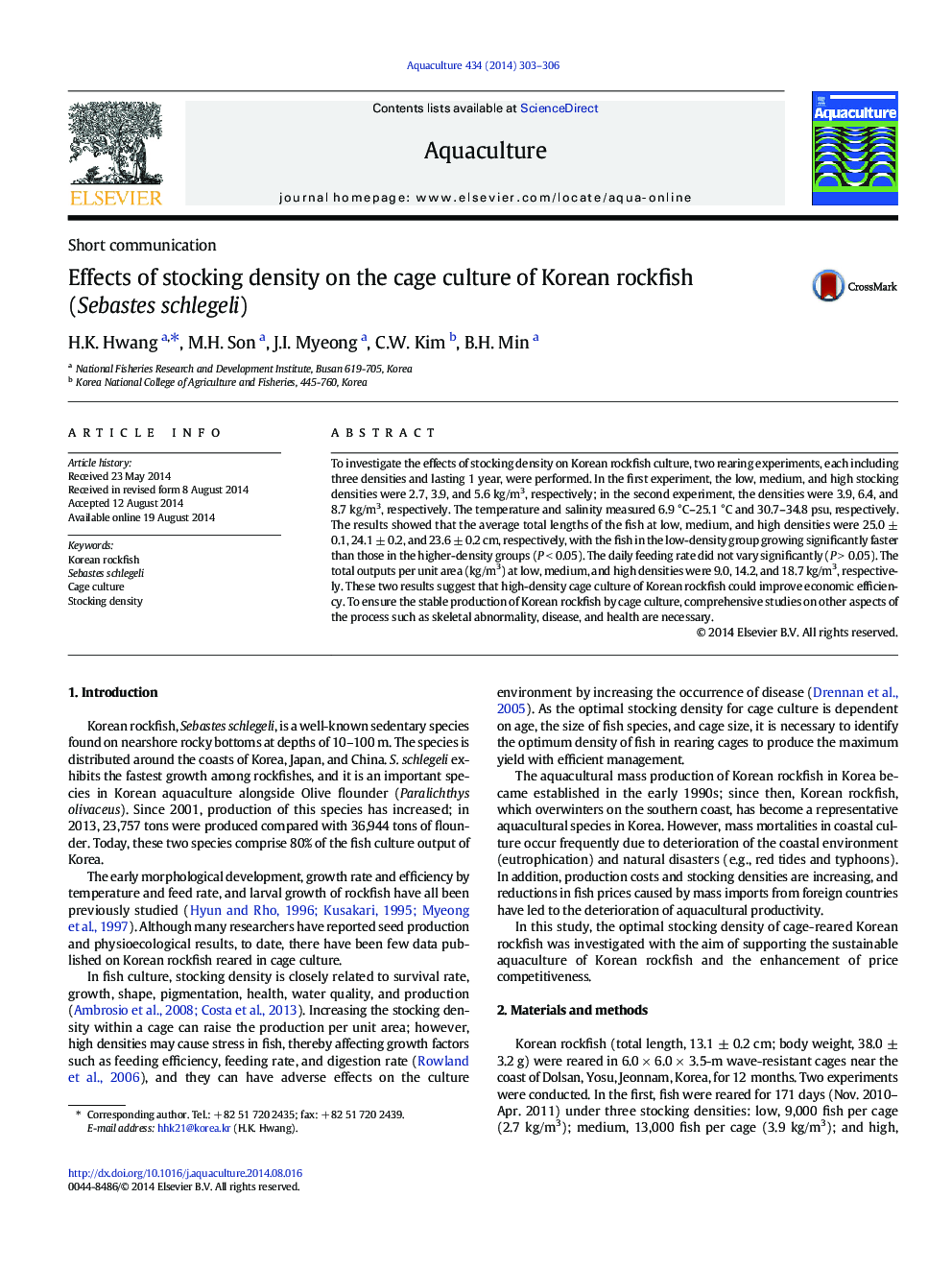| Article ID | Journal | Published Year | Pages | File Type |
|---|---|---|---|---|
| 2421729 | Aquaculture | 2014 | 4 Pages |
•The optimal stocking density for cage-reared Korean rockfish was investigated.•Rockfish reared in low density were growing faster than those in higher density.•Output per unit area of high-density culture was higher than those of low- and medium-density cultures.
To investigate the effects of stocking density on Korean rockfish culture, two rearing experiments, each including three densities and lasting 1 year, were performed. In the first experiment, the low, medium, and high stocking densities were 2.7, 3.9, and 5.6 kg/m3, respectively; in the second experiment, the densities were 3.9, 6.4, and 8.7 kg/m3, respectively. The temperature and salinity measured 6.9 °C–25.1 °C and 30.7–34.8 psu, respectively. The results showed that the average total lengths of the fish at low, medium, and high densities were 25.0 ± 0.1, 24.1 ± 0.2, and 23.6 ± 0.2 cm, respectively, with the fish in the low-density group growing significantly faster than those in the higher-density groups (P < 0.05). The daily feeding rate did not vary significantly (P > 0.05). The total outputs per unit area (kg/m3) at low, medium, and high densities were 9.0, 14.2, and 18.7 kg/m3, respectively. These two results suggest that high-density cage culture of Korean rockfish could improve economic efficiency. To ensure the stable production of Korean rockfish by cage culture, comprehensive studies on other aspects of the process such as skeletal abnormality, disease, and health are necessary.
